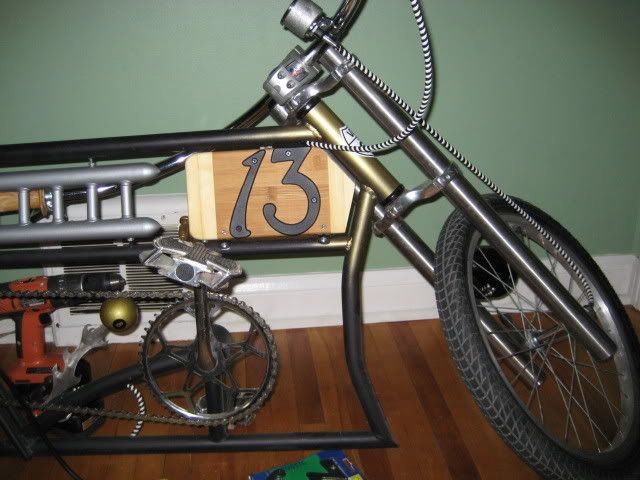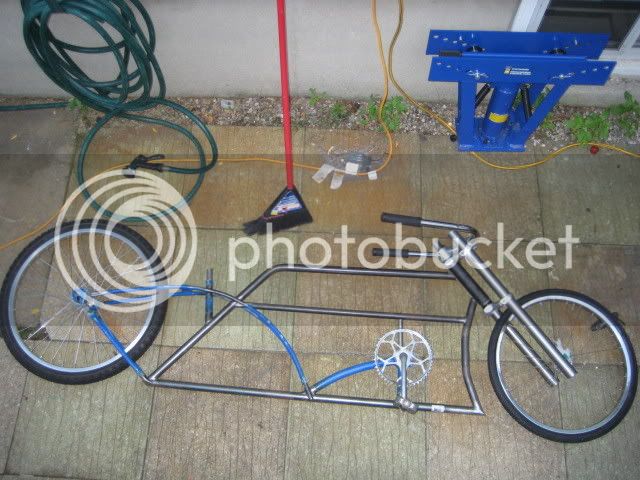Hey gang, as it stands now, my entry in the bbo is in jeopardy. In order to use the front end I want, i've had to weld the bearing cups to the frame, and stretch the fork stem the same length. The problem is, the welds keep cracking :x
I'm using a mig welder with flux-core wire, heat set on high, wire feed set slow. I've cleaned the metal down to a bare surface, beveled the edges so my bead has a valley to fill. I switch sides every half inch or so, cleaning flux between each weld. I am using different thicknesses of tubing (gas pipe vs regular bike stem) and have blown through the thinner tubing in 1 or 2 spots trying to make sure the weld is sinking in.
Seems every time I clean up the excess bead, I find the seam i'm trying to weld.

I've used the bench grinder and my hand held with a flap wheel to clean with, same results.
I'm thinking it's the different cooling speeds of the 2 metals causing the cracks, but i really dont know, as the frame and bearing cups did the same dang thing.

All i know is unless i get this figured out, i'm sunk, as this cannot be trusted to ride, and I dont build bikes to be all show and no go, if I cant ride it, i dont want it.
Rick
I'm using a mig welder with flux-core wire, heat set on high, wire feed set slow. I've cleaned the metal down to a bare surface, beveled the edges so my bead has a valley to fill. I switch sides every half inch or so, cleaning flux between each weld. I am using different thicknesses of tubing (gas pipe vs regular bike stem) and have blown through the thinner tubing in 1 or 2 spots trying to make sure the weld is sinking in.
Seems every time I clean up the excess bead, I find the seam i'm trying to weld.

I've used the bench grinder and my hand held with a flap wheel to clean with, same results.
I'm thinking it's the different cooling speeds of the 2 metals causing the cracks, but i really dont know, as the frame and bearing cups did the same dang thing.

All i know is unless i get this figured out, i'm sunk, as this cannot be trusted to ride, and I dont build bikes to be all show and no go, if I cant ride it, i dont want it.
Rick






